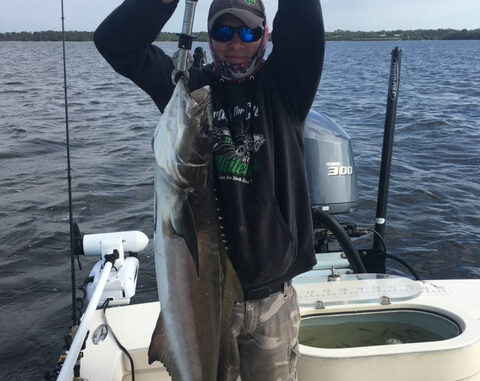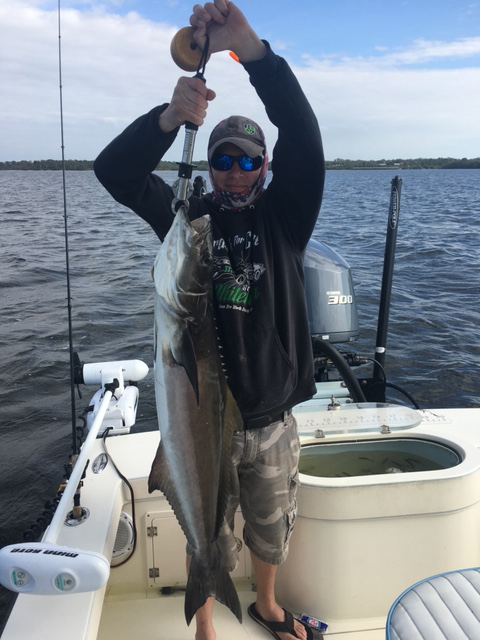

By Capt. Mike Manning
Fish have tails and some species use them to swim south to warmer waters as winter approaches. One of my favorites is cobia, and in the coming days I’ll be working them as they make their annual migration through our local waters of Boca Grande.
Cobia fishing is a blast, as it is a lot like hunting. I’m generally using the tower of my 24 Avenger to scan the flats for cobia, which often travel in pairs or small groups just under the surface. They also like to trail stingray pods, as the wings of the rays kick up sand on the bottom, exposing small crabs, shrimp or other edibles the cobia can easily feed upon.
We use a variety of baits to target cobia, from live sardines or pinfish, to artificial baits like the venerable plastic eels that have proven to be one of the most effective lures for cobia.
The game is simple, we cruise along and when fish are spotted, we position the boat to intercept and get a bait in front of the moving fish. Cobia are curious creatures, and often will swim within casting distance of the boat without any fear. The other great thing about cobia, is when more than one is present, double hookups are common. In fact, other cobia will often follow a hooked cobia around, giving a second angler a shot at hooking one.
Cobia are great sport on light tackle and are know for long, powerful, drag burning runs. We generally find them from undersized (the minimum length is 33 inches from nose to fork of the tail) up to 4 feet or more. It’s possible to score cobia up to 50 pounds or more.
Cobia are a prized table fish, many opting to cut them into steaks similar to the way sharks, kingfish and other long-bodies fish are handled. They can then be seasoned or marinated in your favorite flavorings and grilled.
